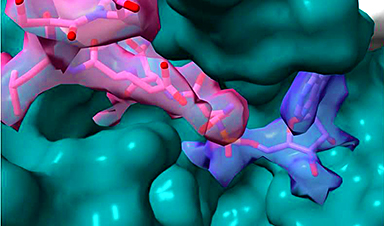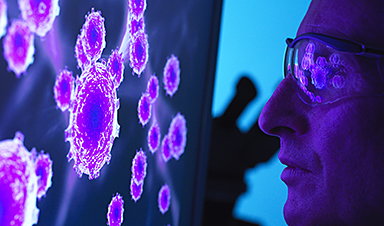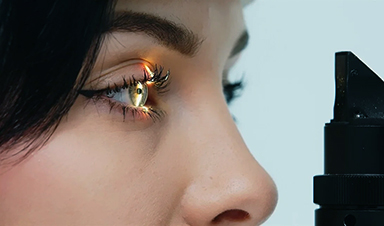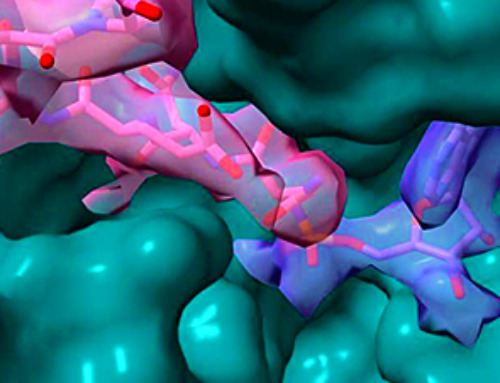Breakthrough infections are exceedingly rare. But by tracking them, researchers can uncover viral variants that manage to dodge the immune response.
Tens of millions of people in the United States have now been fully vaccinated against covid-19. These people are seeing friends, eating out, and—in rare cases—getting infected.
But we shouldn’t panic: these kinds of “breakthrough infections” are entirely expected with any mass vaccine rollout.
According to new figures released by the Centers for Disease Control and Prevention, more than 87 million people had been vaccinated in the US as of April 20. Of those, 7,157—0.008%—went on to become infected with SARS-CoV-2. The true number is likely to be slightly higher because mild or asymptomatic infections might be missed or go unreported. But the data are still encouraging. Only a tiny fraction of vaccinated people became infected and an even tinier fraction developed serious illness: just 331 were hospitalized for covid-19, and 77 died of the disease.
New studies published last week show that even in high-risk settings like nursing homes, these breakthrough infections seem to be rare. And when infections do occur, symptoms tend to be nonexistent or mild. What’s more, vaccinated individuals who become infected have lower viral loads than unvaccinated people—meaning they are less likely to transmit the virus.
Still, it’s important to keep monitoring breakthrough infections. All the existing covid-19 vaccines prime the immune system to recognize the spike proteins on the virus’s surface so that when the system encounters the real pathogen, it can fight back quickly. But if the body doesn’t mount a strong immune response to the shot, it won’t be ready to fight the virus. In other cases, the pathogen may have evolved enough to evade the body’s prepared immune response, and the vaccine won’t work as well. This is called immune escape.
Some researchers studying SARS-CoV-2 worry that with so much virus still circulating globally, the virus will have plenty of chances to hit on a winning combination of mutations that allow it to evade the immune response prompted by the vaccine. Tracking breakthrough infections could help them spot worrisome new variants and identify when vaccines are becoming less effective. This might help determine when booster shots are needed or point to more effective vaccine designs.
High-risk environments
People who work and live in nursing homes were among the first to be offered the covid-19 vaccine, and some of the first to benefit. Between late December and late March, case numbers in these facilities dropped by 96%. Nursing homes are ideal places for pathogens to spread and cause harm, and vaccines may not work as well because older people’s bodies typically mount a weaker immune response. Even influenza outbreaks can be deadly in these facilities. But the CDC found few breakthrough covid infections.
In one study, researchers analyzed infections in 78 Chicago nursing homes with nearly 8,000 vaccinated residents and 7,000 vaccinated staff. They found more than 600 coronavirus infections, but only 22 of those occurred in fully vaccinated individuals, 12 in residents and 10 in staff. Fourteen were asymptomatic and five caused only mild symptoms. When the team examined specimens from seven of the people with breakthrough infections, they found low levels of the virus. And none of the initial infections led to additional cases, suggesting that these vaccinated people didn’t spread the virus.
And when outbreaks do occur, the vaccines still provide good protection. A second CDC study examined an outbreak in a Kentucky nursing home where just half the staff were fully vaccinated. The outbreak, which began with an unvaccinated staff member, led to 46 covid-19 infections. Out of 71 vaccinated residents, 18 (25%) became infected, two were hospitalized, and one died. The staff fared better. Of the 56 vaccinated employees, four (7%) became infected. Most of those infections were asymptomatic. Only 6.3% of the residents and staff who had been vaccinated developed symptoms, compared with 32% of unvaccinated individuals.
During a nursing home outbreak, “staff and residents are continuously encountering the SARS-CoV-2 pathogen over and over again,” says Meagan Fitzpatrick, who models infectious diseases at the University of Maryland School of Medicine. So seeing such a small number of infections in this type of setting is encouraging
Image Credit: Envato / Amanda Scott
Post by Amanda Scott, NA CEO. Follow her on twitter @tantriclens
Thanks to Heinz V. Hoenen. Follow him on twitter: @HeinzVHoenen
News
Team finds flawed data in recent study relevant to coronavirus antiviral development
The COVID pandemic illustrated how urgently we need antiviral medications capable of treating coronavirus infections. To aid this effort, researchers quickly homed in on part of SARS-CoV-2's molecular structure known as the NiRAN domain—an [...]
Drug-Coated Neural Implants Reduce Immune Rejection
Summary: A new study shows that coating neural prosthetic implants with the anti-inflammatory drug dexamethasone helps reduce the body’s immune response and scar tissue formation. This strategy enhances the long-term performance and stability of electrodes [...]
Scientists discover cancer-fighting bacteria that ‘soak up’ forever chemicals in the body
A family of healthy bacteria may help 'soak up' toxic forever chemicals in the body, warding off their cancerous effects. Forever chemicals, also known as PFAS (per- and polyfluoroalkyl substances), are toxic chemicals that [...]
Johns Hopkins Researchers Uncover a New Way To Kill Cancer Cells
A new study reveals that blocking ribosomal RNA production rewires cancer cell behavior and could help treat genetically unstable tumors. Researchers at the Johns Hopkins Kimmel Cancer Center and the Department of Radiation Oncology and Molecular [...]
AI matches doctors in mapping lung tumors for radiation therapy
In radiation therapy, precision can save lives. Oncologists must carefully map the size and location of a tumor before delivering high-dose radiation to destroy cancer cells while sparing healthy tissue. But this process, called [...]
Scientists Finally “See” Key Protein That Controls Inflammation
Researchers used advanced microscopy to uncover important protein structures. For the first time, two important protein structures in the human body are being visualized, thanks in part to cutting-edge technology at the University of [...]
AI tool detects 9 types of dementia from a single brain scan
Mayo Clinic researchers have developed a new artificial intelligence (AI) tool that helps clinicians identify brain activity patterns linked to nine types of dementia, including Alzheimer's disease, using a single, widely available scan—a transformative [...]
Is plastic packaging putting more than just food on your plate?
New research reveals that common food packaging and utensils can shed microscopic plastics into our food, prompting urgent calls for stricter testing and updated regulations to protect public health. Beyond microplastics: The analysis intentionally [...]
Aging Spreads Through the Bloodstream
Summary: New research reveals that aging isn’t just a local cellular process—it can spread throughout the body via the bloodstream. A redox-sensitive protein called ReHMGB1, secreted by senescent cells, was found to trigger aging features [...]
AI and nanomedicine find rare biomarkers for prostrate cancer and atherosclerosis
Imagine a stadium packed with 75,000 fans, all wearing green and white jerseys—except one person in a solid green shirt. Finding that person would be tough. That's how hard it is for scientists to [...]
Are Pesticides Breeding the Next Pandemic? Experts Warn of Fungal Superbugs
Fungicides used in agriculture have been linked to an increase in resistance to antifungal drugs in both humans and animals. Fungal infections are on the rise, and two UC Davis infectious disease experts, Dr. George Thompson [...]
Scientists Crack the 500-Million-Year-Old Code That Controls Your Immune System
A collaborative team from Penn Medicine and Penn Engineering has uncovered the mathematical principles behind a 500-million-year-old protein network that determines whether foreign materials are recognized as friend or foe. How does your body [...]
Team discovers how tiny parts of cells stay organized, new insights for blocking cancer growth
A team of international researchers led by scientists at City of Hope provides the most thorough account yet of an elusive target for cancer treatment. Published in Science Advances, the study suggests a complex signaling [...]
Nanomaterials in Ophthalmology: A Review
Eye diseases are becoming more common. In 2020, over 250 million people had mild vision problems, and 295 million experienced moderate to severe ocular conditions. In response, researchers are turning to nanotechnology and nanomaterials—tools that are transforming [...]
Natural Plant Extract Removes up to 90% of Microplastics From Water
Researchers found that natural polymers derived from okra and fenugreek are highly effective at removing microplastics from water. The same sticky substances that make okra slimy and give fenugreek its gel-like texture could help [...]
Instant coffee may damage your eyes, genetic study finds
A new genetic study shows that just one extra cup of instant coffee a day could significantly increase your risk of developing dry AMD, shedding fresh light on how our daily beverage choices may [...]





















